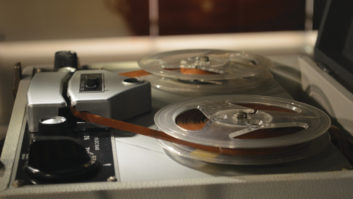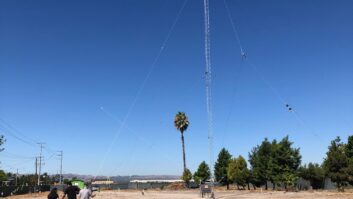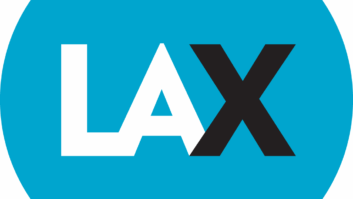WASHINGTON: Broadcasters facing tower height restrictions for new AM antenna projects have a new option when facing local zoning and FAA constraints.
The FCC has simplified application procedures for the low-profile KinStar antenna, no longer requiring proof of performance, current distribution measurements or a formula for the vertical plane radiation characteristic for non-directional AM facilities. Observers say the change opens up the U.S. market for developers of the vertically short antenna.
STAR-H Corp. and Kintronic Laboratories developed the KinStar, which has a reported radiating efficiency approximately 98 percent that of a quarter-wave tower at approximately one-third the height of a standard monopole. The antenna meets minimum efficiency for Class B, C and D stations, is scalable to frequency and measures just 45 feet high at 1680 kHz, according to the makers.
The FCC, based on field tests and reports evaluated by Ron Rackley of du Treil, Lundin and Rackley Consulting Engineers, announced in the fall it has simplified procedures for broadcasters to use the antenna. The KinStar requires use of a standard 120-radial, one-quarter wave, buried ground system. It will afford AM licensees the flexibility to place antennas where tall towers may be unacceptable, according to the commission.
Waiting for applications
The antenna consists of four electrically short, vertical closely spaced elements, each of which is terminated in a horizontal top load element. The developers claim the KinStar has the same volume of a standard quarter-wave tower “with the legs peeled down” and run horizontally, resulting in good radiation.
“I believe this has some historic proportions in that this is the first AM antenna that is a variant to the standard quarter-wave monopole antenna which will not require proof of performance, ” said Tom King, president of Kintronic.
“This was a very major step. We are now ready to move ahead and look forward to having licensees apply for the KinStar just as they would a standard quarter-wave antenna.”
The need for broadcasters to lower the visual impact of their towers comes at a time when many face increasingly stringent local tower ordinances, King said.
“We have spoken with broadcasters who have expressed a great need for this type of antenna. We think we can fill the niche at this time, but feel the need for low-profile antennas will continue to increase.”
As of the end of 2005, King said he was unaware of any licensee applying to use the KinStar.
STAR-H Corp. will continue to provide design and engineering support to Kintronic as needed, said Mike Jacobs, director of research and development for STAR-H.
“We will provide design and engineering support to Kintronic. This will include computer modeling of antennas to provide engineering data for licensing and RF safety considerations,” Jacobs said.
He said the KinStar, because of its low profile, can be installed in a more advantageous central location and improve signal coverage for a given market.
“They can achieve improved signal levels rather than installing a quarter-wave in an outlying area because it is neighbor-friendly … resembling overhead utility lines, which are present in every neighborhood,” Jacobs said.
In addition to aesthetic factors, the KinStar can be constructed more rapidly than a traditional tower, and it can be built in a way as to make it more resistant to hurricanes and other extreme weather events, Jacobs said.
Cost of the KinStar depends on tower height and frequency because it’s scalable to frequency, King said. For example, wooden utility poles could be used for supports on an antenna design of up to 60 feet, which equates to approximately 1300 kHz.
“Typically, in the low end of the AM band, it would be 120 to 130 feet high. That means a broadcaster would have to go with some other kind of support, a lattice tower maybe,” King said. “The new antennas will not require FAA lighting or marking in most cases.”
That’s because FAA standards require lighting on all towers 200 feet or more above ground level.
King said he has been quoting customers “in the $20,000 range” for the KinStar antenna materials kit, which includes “the design, antenna-tuning unit, ground system materials and feeder line” for the KinStar. The cost of supports and construction would add to the final price tag, he said.
Land requirements for the KinStar are approximately the same as for a standard quarter-wave antenna, King said, because of the ground system requirements.
KinStar developers say the antenna is IBOC-configurable and yields a broadband impedance that is compatible with all of the HD Radio AM transmitters on the market.
To come
While Kintronic officials put together marketing plans to promote the KinStar, developers of other low-profile AM antennas continue with their efforts to gain FCC approval.
The commission is accepting non-directional daytime and nighttime applications for Valcom Manufacturing’s free-standing AM fiberglass antennas, which measure 75 and 94 feet and are intended for use between 900 kHz and 1700 kHz. Stations must provide full non-directional proof of performance to establish the antenna minimum efficiency and non-directional characteristics, a source in the FCC’s Audio Services Division said.
Paul MacPherson, president of Valcom, said his company plans to approach the FCC later this year with new engineering data to gain approval for use of its AM antenna without the proof of performance requirement.
“We have seen what Kintronic has done and will seek similar approval for our free-standing AM antennas. We’ve been very pleased with the FCC response to our antenna,” MacPherson said.
He estimated there are “a dozen or so” AM broadcasters in the states using the Valcom AM fiberglass antenna.
‘Predictable’
The FCC source said KinStar developers provided complete and detailed documentation describing operations of the antenna, including field tests and NEC modeling. The developers “showed that the antenna would perform in a predictable way across the AM band and that its operation could be described within the framework of our present rules.”
The FCC used field-strength measurements collected from a KinStar test site constructed near Bristol, Tenn., in late 2002 in its evaluations, as reported by Radio World. The KinStar test antenna was 45 feet high and 105 feet in diameter over a full 120-radial ground screen and braced with wooden poles.
The FCC source would not speculate on the number of requests it may receive from broadcasters for the KinStar. However, the official did confirm the agency recently had an application proposing use of a short, non-standard antenna; that applicant subsequently withdrew the application after failing to provide adequate documentation.
Proponents of low-profile antennas say the broadcast industry is battling the “not-in-my-back-yard,” or NIMBY, mindset, which is the impetus for many neighborhoods to exclude new tower projects. The need to find alternatives to tall towers will likely persist, experts say.
Dr. James Breakall, a professor in the Department of Electrical Engineering at Pennsylvania State University, holds the patent for the KinStar but is no longer involved in the antenna’s development, Jacobs said.






